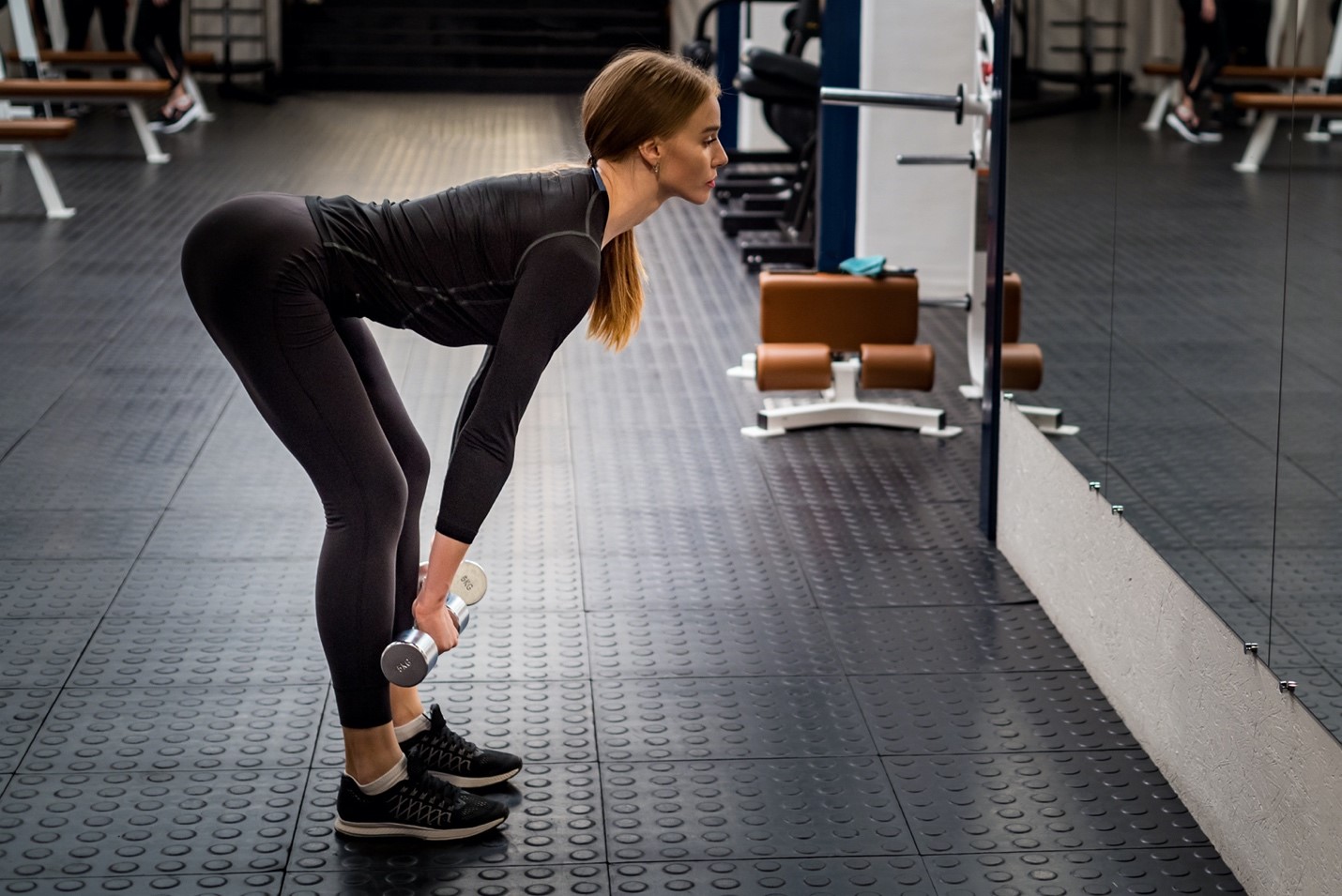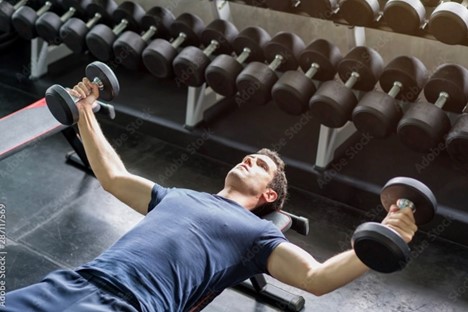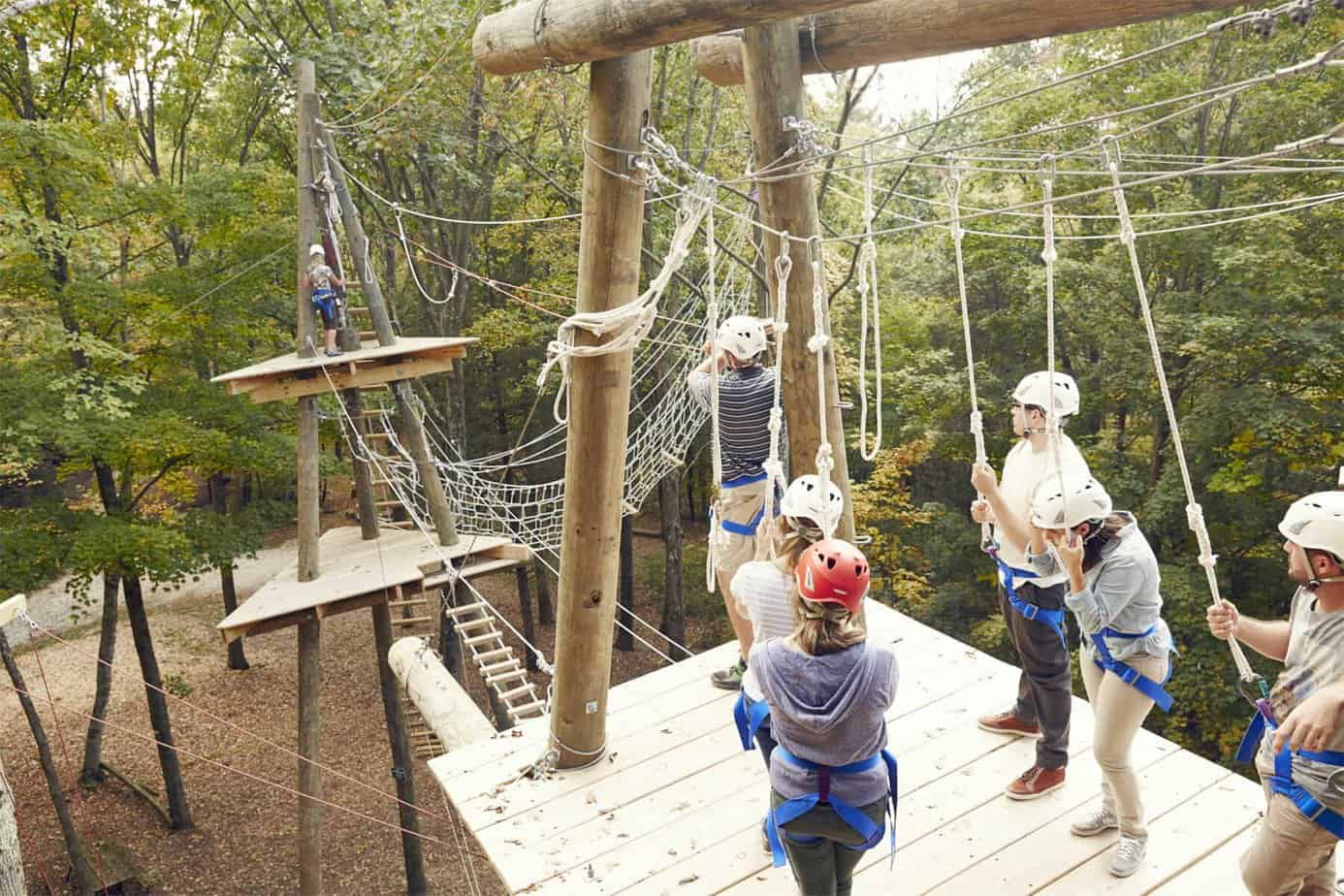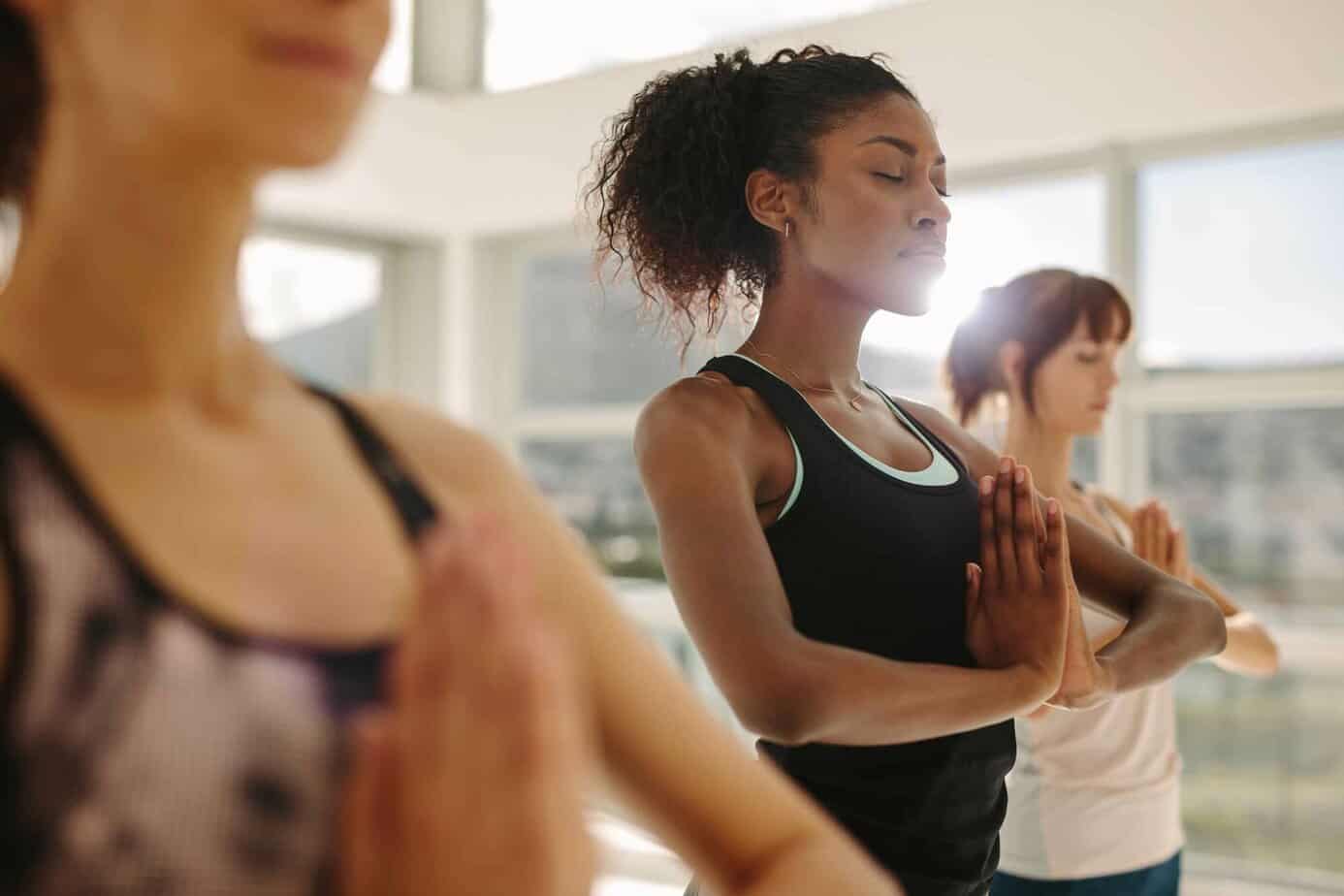Just a quick note before you attempt any of the exercises:
Remember to always consult a physician or healthcare professional before beginning any type of exercise program.
You won’t know what you like until you try, and if you’ve never exercised before, you may not know where to begin. Below are one to two simple exercises to try for each type listed above. Some things to keep in mind:
- If it hurts, stop. If it burns, keep going.
- To modify weighted exercises, drop down in weight. Always listen to your body, and don’t increase weight if you sacrifice your form.
- Push-ups, planks, and similar moves can be modified by placing one knee on the ground.
- If it’s too much, take a break, then resume. Listen to your body, but don’t give up.
Weight lifting/Strength Training
Two weighted exercises you can start with are Romanian Deadlifts (RDLs) and chest fly exercises. A chest fly can either be performed lying on your back on a mat, or standing.

Adobe Stock Photo/Yakov
To perform an RDL:
- Select the appropriate weight (Note: This is an exercise where you can likely use heavier weights than you would with a bicep curl, for example. You may find you can start these off with 8s or above).
- Place your feet together and stand up tall, keeping a flat back.
- Hold the weights by your hips.
- Bend over without bending your knees, keeping a flat back.
- As you bend, take each weight and “roll” it down past your shin.
- Pull back up.
- Repeat 10 times.
Chest fly:

Adobe Stock Photo/CasanoWa Studio
To perform a chest fly:
- Select the appropriate weight (Note: for beginners, you want to select the lightest weight you have. If you can’t perform the exercise with weight at first, simply perform the movement until you have perfected your form).
- Lying down: Lie down on your back on a mat, with your knees bent.
- Take your weights, put them together in your hands, and push the weights up over your head.
- Separate your hands slowly, opening up like a pair of wings. Elbows should be at 90-degree angles as you bring the weights down as low as you can without touching the floor. Repeat 10 times.
- Standing up: Stand up, with knees slightly bent and the back at an angle. Hold the weights in front of your chest together. Open up your arms as if you’re spreading your wings, taking care not to rise your arms above the shoulder. If you can easily do this exercise, your weights are too light – this exercise “lights up” muscle groups that likely haven’t been awakened in some time.
Strength training:
- Planks and push-ups are good ways to start building body and core strengths. It’s perfectly okay to modify any of these exercises. Try different types of planks, such as side planks to target the oblique muscles, and low planks to help strengthen the back. Try to work up to a set of 10 push-ups and holding your chosen plank for 30 seconds to 1 minute.
Tips on Doing Reps
If you want to work out and reap the benefits, but don’t have a lot of time, try EMOM workouts. It stands for “every minute on the minute.” You can take the last 3 exercises listed and combine them with some listed below to create a full workout. It’s also a great way to rest your body in between.
For example, you decided you’re going to do 10 reps of RDLs, 10 reps of chest flys, 10 push-ups, and hold a 30-second plank. You would do the following:
- Set a timer for 60 seconds.
- Perform 10 RDLs.
- What time is left over on the timer is your break.
- Reset the timer for 60 seconds.
- Perform 10 chest flys.
- What time is left over on the timer is your break.
- Reset the timer for 60 seconds.
- Do 10 push-ups.
- Time left over in the 60 seconds is your break.
- Do a 30-second plank hold.
If you repeat that EMOM block twice, that’s a full workout. The faster you go, the more of a break you get. Just remember not to sacrifice form.
Cardio:
You can also use the EMOM blocks for cardio too. It’s a good way to get your heart rate down in between reps. Cardio can be difficult on the lungs and heart if you’re just starting out – try to perform the talk test while exercising. If you’re able to speak, then your breathing – and most likely your heart rate – are right where they should be. Some exercises to try:
Marching in Place:
- Lift your knees as high as comfortable, engaging your core and swinging your arms.
- If you want to increase the intensity, you can add a hop with each march, or you can jog in place.
Marching is a good way to start without “turning up the heat” too much.
Squats:
- Stand with your feet shoulder-width apart and toes slightly turned out.
- Lower your hips back and down as if sitting into an imaginary chair.
- Keep your weight in your heels and your chest lifted. As you stand back up, squeeze your glutes. Perform squats for 30 seconds, focusing on proper form and controlled movements.
Tip: Once you master good squat form, you can hold weights on each side. When you do that, this exercise really turns its focus to the legs, and exercises like split squats are often included in “leg day.”
Mountain Climbers:
- Start in a high plank position with your hands directly under your shoulders.
- Bring one knee towards your chest, then quickly switch legs, mimicking a running motion.
- Keep your core engaged and your hips stable throughout the exercise. Perform mountain climbers for 30 seconds, focusing on maintaining proper form and a steady pace.
Only try mountain climbers if you’re able to hold a plank for 30 seconds to a minute. You’ll need the core strength to perform the exercise properly.
Yoga:
Yoga can be slightly difficult to learn at home, but below is a simple flow that is also a good warm-up or cool-down.
Sphinx:
- Lay down on a mat on your stomach and put your forearms flat on the ground, palms down in front of you.
- Stretch lightly, pushing your hands into the ground and pulling your chest up.
Downward Dog:
- Moving gently out of the sphinx, move your feet back, almost in a plank position.
- Use your arms to boost you up, and form a V-shape. Hold this pose for at least 30 seconds.
Child’s Pose:
- Flow from here by putting your arms out in front of you, putting your body flat on the mat, and puling your torso into your hips.
- Spread your knees and legs slightly and pull your body into a “ball,” with arms still outstretched in front of you.
- The corresponding photo will help you understand this position a bit better.
Other types of exercise and movement mentioned include dance, walking/running (which are forms of cardio), and hiking. The best way to discover dance is to seek out a class, whether you’re into hip-hop or ballroom dancing.
Simple hiking doesn’t require much gear, except for sneakers and a water bottle, and it’s a great way to get in touch with nature while keeping yourself moving.
Exercise certainly offers endorphins – most people have heard the term “runner’s high.” However, filling your schedule with healthy choices that you enjoy naturally reduces your cravings for alcohol or drugs.
If you or a loved one is struggling with addiction, Mountainside can help.
Click here or call (888) 833-4676 to speak with one of our addiction treatment experts.

 By
By 






